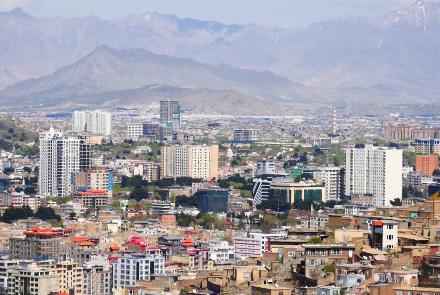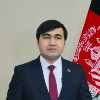A few months ago, the well-known former cricketer and current Prime Minister of Pakistan, Mr. Imran Khan, informed Dr. Abdullah Abdullah, Chairman of Afghanistan’s High Council of National Reconciliation (HCNR), that Afghanistan and Pakistan need to adopt the spirit of “letting bygones be bygones.” As always, Pakistan's political leadership fails to realize that the Afghan people are unable to simply forget the millions of their martyred and disabled who have fallen victim to the proxy policies of regional players.
‘Rogue’ elements from adjoining countries have already trained thousands of hardliners to attempt wresting the reigns of control as they destroy the fabric of civil society in a misguided quest for regional supremacy and to satisfy a lust for unbridled power. However, if the purpose of the Prime Minister’s statement is intended to convey that his government is no longer supporting non-state actors in the service of its political interests, then of course it bodes well for a positive change in Pakistan’s behavior.
Nevertheless, the military and civilian authorities of Pakistan need to undertake practical steps for realizing the success of the Prime Minister’s commitment, despite the fact that Pakistan’s leaders have displayed a less than stellar record over the last several years in managing to fulfill such well-intentioned aspirations.
Yet, if under the leadership of Mr. Khan, Pakistan is able to demonstrate the resolve to actually effect ushering in peace to Afghanistan and the people residing on both sides of the Durand Line, then it would truly deserve being hailed as a mighty step towards achieving regional stability and peace at long last. Yes, it would be hard for Afghans to entirely forget the destructive past that has wreaked such havoc across their lands, but they are a resilient people.
History testifies to Afghanistan making commendable progress in the first three decades of the 20th century as the nation began to establish textile, paper, and armaments industries. Beside these estimable achievements, from the third decade of the 20th century, an impressive Afghan era started to emerge with the strengthening of national institutions, the empowerment of women, the building of economic capacity, and the fortification of the national currency.
Today, Afghanistan is once again initiating change as it rises to meet the challenges of the third decade of the 21stcentury. Most regional countries share the progressive view that the existing infrastructure is badly outmoded and in need of being replaced with a vibrant new one. Afghanistan’s President, Dr. Moh Ashraf Ghani, boldly ventures that Afghanistan has the capability of helping to integrally connect the nearly 3.3 billion people of South, East, West, and Central Asia to the Gulf-States and many other parts of the world.
Just one year ago, the Afghan government initiated a proposal for a South East-West Corridor (SEW Corridor) to integrally connect twelve southern and eastern provinces of Afghanistan that entail 58 different districts and contain 1,686 villages. The provinces, located along a belt stretching 1,667 km long, are Badakhshan, Nuristan, Kunar, Nangarhar, Logar, Khost, Paktia, Paktika, Zabul, Kandahar, Helmand, and Nimroz. The initial concept of the SEW Corridor calls for establishing economic, cultural, educational, and industrial zones; building 92 planned dams designed to provide agricultural irrigation and generate hydroelectric power; and creating a constellation of sports and entertainment complexes. Several feasibility studies and attendant surveys have engendered genuine hope for bringing the project to fruition in the long-term. It is essentially the vision of President Ghani for building regional connectivity that strengthens hopes that a sustainable Afghanistan will play a prominent part in creating viable political and economic corridors as the infrastructure of a modern and progressive Asia unfolds.
With technical assistance provided by fourteen line ministries and two independent directorates appointed by the order of the President, the initial paperwork for this mega-project, including pre-feasibility studies, has already been completed. Initial calculations made by the task force established in the Administrative Office of the President (AOP) estimate that the opportunity exists for national and international investors of an investment yield of more than 30 billion USD from lithium and uranium extraction in the SEW corridor.
Taskforce activities are to unfold in three phases: a pre-feasibility study; a complete technical and evidence-based feasibility study; and finally, the planned implementation of the project. Whereas Afghanistan is serious about addressing the issues that beset it in the turmoil of the times in order to make a positive contribution to the stability of the region, there has been a strategic negligence of Afghanistan that has had unfortunate adverse effects on the region in terms of peace, stability, economic development, and transit, and yet it is never too late to fashion a unanimity in making peaceful approaches capable of rising to the challenges of the present for the benefit of all.
Afghanistan has greatly progressed in resolving its internal challenges from all walks of life, albeit reconciling the broken mindsets of disparate Afghan religious and political elements has not been an easy task. To replace institutions like the PRTs (provincial reconstruction teams) and the other US- and allied-based technical donor organizations, Afghan councils, state-owned companies, and other entities have been established, activated, empowered, and promoted in order to expedite the government’s responsiveness to the various concerns of the Afghan people.
Today, after 40 years of struggle, Afghanistan is meeting half of the entire budgeted expenses of the state. State revenues have increased to 2.2 billion USD as of 2019, and the nation is no longer largely dependent on a single country for our exports and imports but has forged ongoing trade links with South Asia, the Middle East, and also Europe via Central Asia. Our cabinet has been ranked #5 out of 50 cabinets of Asian states in 2018. Women and youth have been increasingly empowered. Today the Armed Forces of Afghanistan, trained by expert US and NATO service personnel, are conducting operations independently against the international terrorists within our borders.
Social media in Afghanistan has developed to the point where it enjoys a domain of four million social media users. Hundreds of organizations specializing in literature, research, development, and welfare outreach are active in various provinces throughout Afghanistan. Furthermore, hundreds of NGOs, universities, and technical institutions are engaged in activities focusing on women and children's issues. The country is proud that its independent media is able to play a critical and vibrantly supportive role in the development of Afghanistan’s civil society. In total, there are some 2,000 registered media outlets accessible from more or less 1,000 different websites.
Leaders across Asia must naturally be committed to the continent’s long-term sustainability. The development of Afghanistan’s untapped resources can serve to bring other Asian countries together under the aegis of a peaceful and prosperous Afghan state while at the same time serving to advance their national interests. Afghanistan is actively engaged in substantive discussions with leading powers to enhance Afghanistan’s economy, security, and stability. Such backdoor diplomacy is providing the key to a permanent peace in Afghanistan while equipping, building, and empowering all three pillars of the Afghan state.
We are convincing our regional and international partners that sustainable development is the future of Afghanistan, while our determined message to those players who still may believe in the efficacy of supporting proxy forces is very clear: “Just say ‘no’ to Terror.”
It is true that our past pains us deeply, even though we are banking on its closure, because now is the time to pursue a course of cooperation, integration, and sustainable growth across the region with the support of all and for the benefit of all. Now is the time to come up with a comprehensive strategy to reinforce the peace initiative while supporting sustainable growth and development.
Afghanistan has sacrificed a very great deal to foster stability in the region, earning a debt of collective moral responsibility from its neighbors to assist Afghanistan now in meeting its challenges. Terrorism rings the death knell for regional stability. It is, therefore, time to work together as we not only welcome but encourage our neighboring countries to support initiatives promoting enhanced regional connectivity.
Only a peaceful Afghanistan can bring the stability we pursue to the entire region, one that will equally benefit the collective regional economy, prosperity, and security in significant measure. Only our nation’s peaceful existence ensures a strategic transformation of energy, culture, and capacity building. It is time for the region to acknowledge that a peaceful Afghanistan is in the vital interest of all.


